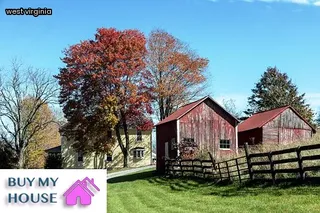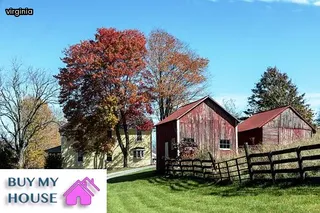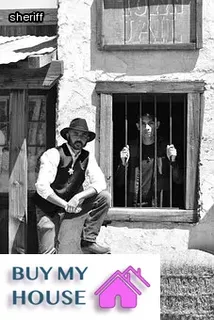Exploring the historic properties of West Virginia offers a unique and often overlooked journey into the past. From grand estates to small cottages, uncovering the stories behind these forgotten houses is an adventure like no other.
Many of these homes have been abandoned for decades, and their condition can be precarious. However, for those willing to take on the challenge of restoring them, these properties represent a unique opportunity to preserve a piece of history and bring these stories back to life.
With careful research and due diligence, it is possible to breathe new life into these forgotten havens and create something truly special in the process. Each home offers its own unique set of challenges that must be addressed before any restoration can begin - from understanding local zoning laws and building codes to researching architectural styles and materials used in construction - every step requires close attention if success is to be achieved.
Through this exploration of West Virginia's long forgotten houses, we come away with a deeper appreciation for our state's rich history and an understanding of what it takes to revive it in all its former glory.

Exploring two of the forgotten houses of West Virginia, Adamson House and Albert E. Cox House, reveals a unique architectural history.
The Adamson House is a classic example of Colonial Revival style architecture, featuring a gambrel roof and symmetrical façade. The Albert E.
Cox house was built in the Queen Anne style with its intricate woodwork and multi-level porch design. Both houses have remained relatively untouched since their initial construction.
However, due to years of abandonment and neglect, many structures associated with these historic homes are beginning to deteriorate rapidly, presenting a challenge for those looking to preserve them. Rehabilitation efforts have been made to restore the original features of these homes while also honoring their past.
Restorers have taken care to retain as much of the original architecture as possible while also making necessary repairs and improvements to ensure that these homes remain standing for years to come.
The Miller House and Simmons Farmstead are two of the forgotten houses in West Virginia that have been left to the elements. Miller House was built in 1881 and was once a thriving farm but has since become an abandoned ruin.
Simmons Farmstead was also built in the 1880s, although it never reached its full potential due to a series of unfortunate events. The two properties have been passed down through generations, but they were eventually neglected by their owners, which led to their eventual demise.
By exploring these two sites, we can uncover the challenges faced by those who have abandoned real estate in rural communities and gain insight into the history of West Virginia's rural areas.

Exploring the history of Smith House in West Virginia, a forgotten home in an abandoned real estate, provides insight into the challenges faced throughout the region. From years of neglect and decay to potential environmental concerns, the preservation of these properties is essential to understanding the past.
Examining evidence from this particular property helps to illustrate some of the broader issues at play in other similar forgotten houses across West Virginia. Property records, local archives, and oral histories can all provide clues as to how Smith House was used over time and highlight its significance in a larger historical context.
There are also physical features such as foundations, walls, and artifacts that can help tell its story. By piecing together all these clues about Smith House's past we can gain a better understanding of what life was like for those who used it and how its legacy has been preserved for future generations.
Investigating abandoned places in West Virginia can be a daunting task, as many of these forgotten houses are riddled with the challenges that come with disrepair and neglect. With the right resources, though, it is possible to uncover the history behind these once vibrant homes.
Exploring these deserted places can provide insight into how our ancestors lived, worked and played in this state. By taking a closer look at West Virginia's abandoned properties, we can gain an understanding of how these homes have changed over time and what challenges remain for those looking to restore them.
Through careful research, interviews with locals who remember these homes when they were occupied, and careful assessment of the current condition of the homes, we can begin to understand what it takes to renew these sites while preserving their unique character and history.

Abandonment of real estate in West Virginia is a complex issue with many causes. Factors such as population decline, economic hardship, and the aging of existing buildings can all contribute to properties being left behind.
Additionally, environmental issues like flooding and landslides can lead to buildings becoming uninhabitable or unmarketable. The closure of businesses due to changing consumer habits or competition from larger corporations can also have a negative effect on property values.
Finally, natural disasters such as storms, fires, and earthquakes can quickly leave homes and other buildings unsafe for occupancy. All these factors combined make it difficult for West Virginians to keep up with their properties, leading to abandoned buildings across the state.
Exploring the forgotten houses of West Virginia comes with a unique set of challenges, particularly when it comes to understanding the impact of limited funding and regulations. Uncovering the stories behind abandoned real estate requires a great deal of research into legal documents, records, and other resources to understand the ownership history and local laws affecting the property.
The shortage of funds available to many rural towns and counties in West Virginia can create additional roadblocks for those interested in preserving these historical buildings. Regulations imposed by government entities also play a role in determining how these properties may be used or preserved.
Local zoning codes, environmental protection laws, and even historic preservation ordinances must all be taken into consideration when exploring the forgotten houses of West Virginia. With so many elements at play, it is important for individuals seeking to uncover the stories behind abandoned real estate to be aware of the various implications that limited funding and regulations can have on their projects.

The efforts to revitalize West Virginia are helping to uncover the forgotten houses and abandoned real estate of the state. Local organizations are working together to bring these properties back to life, restoring them to their former glory and providing potential new homes for families.
In addition, a number of grants and programs have been made available to help fund the rehabilitation process, allowing communities in West Virginia the opportunity to invest in their future. Furthermore, stateside initiatives such as “Homes for All” and “My Place Matters” work to provide resources, support and guidance when it comes to preserving and maintaining these old homes.
By leveraging specialized services such as loan assistance, tax credits, building code compliance and more, individuals can take advantage of these resources while also helping improve their local areas. Ultimately, with the help of both local government organizations and private partnerships, there is a growing momentum that is aiding in the effort to revitalize West Virginia's forgotten houses.
Investing in Mountain State Spotlight is an important step in supporting independent journalism, especially when it comes to exploring the forgotten houses of West Virginia.
By contributing to this organization, readers gain access to exclusive content that focuses on uncovering the challenges of abandoned real estate in the Mountain State.
Through their investigative reporting and public engagement initiatives, Mountain State Spotlight provides an invaluable resource for journalists seeking to better understand and document the complexities of West Virginia's housing market.
As a trusted source for reliable information on this often overlooked issue, contributions to Mountain State Spotlight will help ensure continued coverage of this important topic while providing financial support for independent journalism.

West Virginia is home to many abandoned houses. These forgotten places have been left to deteriorate and be reclaimed by nature, often standing as a reminder of past glories or a warning for the future.
Exploring these abandoned houses can bring great insights into the state's history and culture, but can also help uncover the challenges of neglected real estate. From crumbling foundations to hazardous debris, these empty abodes pose a variety of issues that must be addressed in order to restore them to their former glory.
Factors such as location, availability of resources, and varying levels of decay all play a role in determining the best course of action for restoring an abandoned house in West Virginia. In addition, understanding local regulations regarding ownership and use are paramount when exploring any property with potential for renovation or redevelopment.
By taking a comprehensive approach to assessing each unique property, individuals looking to explore the forgotten houses of West Virginia have the opportunity to preserve its history while also providing a viable option for future restoration projects.
When it comes to examining strategies to improve West Virginia's abandonment rates, a closer look at the forgotten houses of the state is an important place to start. Exploring these abandoned properties can help uncover challenges that are preventing them from being sold or leased, such as a lack of awareness about their availability, difficulties with financing and tax liens due to unpaid bills.
Taking steps to address these issues can help encourage new ownership for these homes and prevent them from becoming further neglected. Understanding the current market value of each property and connecting with local real estate agents can also be beneficial for finding interested buyers.
Educating the public about available grants, loan options and other forms of assistance may also prove effective in improving abandonment rates by making it easier for people to purchase vacant properties.

As West Virginia continues to struggle with the abundance of abandoned real estate that plagues its towns, it is important to identify potential solutions to address the issue. From an economic standpoint, providing incentives for developers or private investors who are willing to purchase and restore these properties can be beneficial.
Additionally, creating a system of public and private partnerships could help ensure that resources are available when needed. Other possible options include establishing loan programs that allow individuals, families, and businesses to purchase abandoned properties at reduced prices, as well as providing tax credits for those who choose to invest in restoring them.
Finally, local municipalities should consider implementing zoning regulations that promote redevelopment and discourage demolition of existing structures. All of these measures could potentially help reduce the number of neglected homes in West Virginia while also promoting economic growth throughout the state.
When it comes to exploring the forgotten houses of West Virginia, there are a number of preservation strategies that need to be taken into account. Understanding the challenges of abandoned real estate and how they can be addressed is key in preserving these historic properties.
It's important to consider the significance of the property, which can range from architectural value to its importance in local history. Local governments and organizations have developed various approaches such as tax credits, zoning regulations, and grants to incentivize property owners to maintain their buildings.
Additionally, research should be conducted on existing preservation laws in order to determine what options are available for each property. With an analysis of existing preservation strategies that can help protect these historic homes, we can work together towards a sustainable future for West Virginia's forgotten houses.

Restoring abandoned homes in West Virginia can bring a variety of economic benefits to the state. Not only does restoring these forgotten houses create jobs, but it also increases property values, boosts the local economy, and revitalizes communities.
One of the biggest challenges of restoring these homes is ensuring that they are structurally sound. Many of these buildings are decades old and require extensive repairs before they can be brought back to life.
When done correctly, however, restoration projects can provide lasting improvements to neighborhoods and lead to greater investment in real estate. Furthermore, abandoned houses may be eligible for financial incentives from local governments, such as tax credits or grants, which can help offset some of the costs associated with renovations.
By exploring the forgotten houses of West Virginia and identifying potential economic benefits of their restoration, leaders in the state can work together to give new life to these historic structures and benefit their local communities for years to come.
If you leave a house abandoned, it can quickly become dangerous. Not only can the structure deteriorate and become unsafe, but there are also other risks associated with leaving a home unattended for long periods of time.
Without regular maintenance, pests such as rodents and insects can take up residence in an abandoned house and cause further damage to the property. Additionally, if an abandoned house is located near a body of water or in an area prone to flooding, it could become submerged due to rising waters.
This could lead to costly repairs that may be difficult for the original owners to afford. Furthermore, when a home is left empty for extended periods of time, it can become a target for theft and vandalism.
These factors combine to make the process of exploring West Virginia's forgotten houses a challenging one.

Abandoned houses have a unique look that can be difficult to ignore. These homes often have broken windows, peeling paint, and overgrown gardens.
In some cases, they may even have graffiti or other signs of vandalism. The lack of upkeep is the most obvious sign that a house has been abandoned.
In addition, many abandoned homes will have items left behind by previous occupants such as furniture, appliances, or clothing. These forgotten items can give clues to what life was like before the home was abandoned.
Other signs of an abandoned house include unkempt yards and driveways, missing roof tiles or shingles, and damaged gutters. By looking for these signs of neglect, it is easy to identify houses that may no longer be occupied.
If you're looking to explore the forgotten houses of West Virginia, you may be wondering how to find abandoned places near you. There are several ways to go about discovering such places in the Mountain State.
First and foremost, do your research! Look for any local news articles or websites that mention abandoned properties or houses for sale. You should also check out your local real estate listings and ask around in the community for any tips on where to find abandoned properties.
Additionally, take note of any dilapidated buildings or houses that you pass by while driving through certain areas. While it’s not always easy to spot an abandoned house from the road, if a property looks neglected it may be a good place to start exploring! Finally, use online mapping tools like Google Maps and Aerial View to locate possible abandoned sites in your area; these services can be quite helpful when trying to pinpoint potential sites near you.
With some patience and diligence, you can soon uncover the challenges of abandoned real estate in West Virginia!.